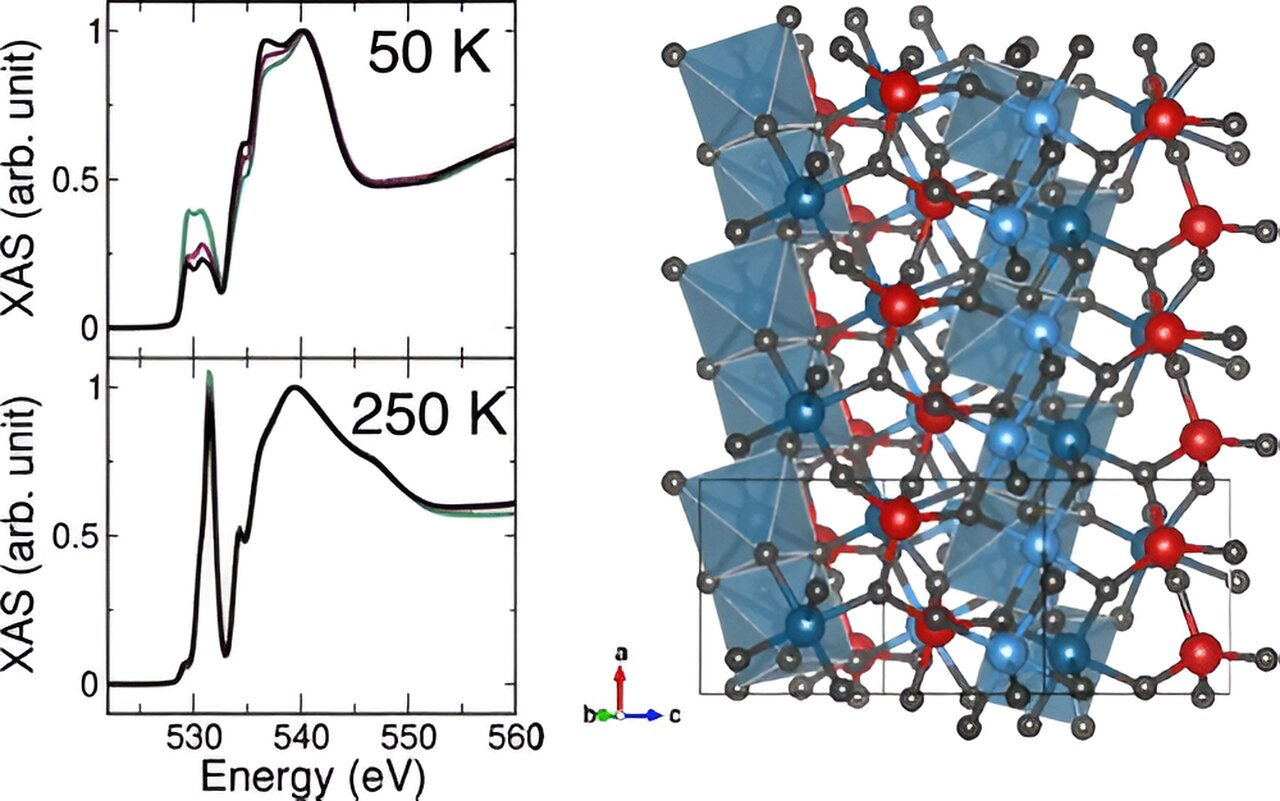Join us on The Big Questions, IFLScience’s podcast, as we dive into the world of e-fuels with Sophie Zienkiewicz and Alasdair Lumsden, co-founders of Carbon Neutral Fuels. Discover how these innovative fuels could revolutionize the future of the fuel industry and play a crucial role in combating climate change.
What exactly is carbon-neutral fuel?
Sophie Zienkiewicz (SZ): Carbon-neutral fuel is a potential game-changer in the fight against climate change. By capturing carbon dioxide from the atmosphere and combining it with clean hydrogen, we can create a fuel that, when burned, releases carbon dioxide and then recaptures it as feedstock. This sustainable alternative has the potential to replace the massive amounts of fuel used in aviation.
Are carbon-neutral fuels and e-fuels the same thing?
Alasdair Lumsden (AL): Absolutely. The term e-fuels emerged because these fuels are often produced using electricity. We can collect carbon dioxide to make e-fuels, but it requires low-carbon electricity to avoid burning fossil fuels. In contrast, traditional fossil fuels are formed over millions of years as plants decayed into the ground, storing energy from sunlight.
Around 30 percent of carbon dioxide emissions are absorbed into the oceans…where it could be collected.
However, this process has inadvertently led to excess CO2 in our atmosphere, contributing to climate change.
So, how exactly are e-fuels made?
AL: The first step is capturing carbon. Initially, we explored extracting CO2 from the concentrated levels in the oceans. However, since that technology is not yet established, we turned to direct air capture. This involves using adsorbents to react with CO2 in the air and then releasing a clean stream of CO2 from the adsorbent.
We also need hydrogen, which can be obtained through electrolysis. By applying electricity to water, we can collect hydrogen. Once we have both CO2 and hydrogen, we combine them. Since CO2 is a stable molecule, it must first be converted to carbon monoxide, which can then be combined with hydrogen to create syngas. This syngas is then processed in a Fischer Tropsch reactor, where it forms long-chain hydrocarbons, primarily in the kerosene range.
It’s an ongoing process, with the CO2 continuously captured and fed into the system, while hydrocarbons are produced as the end result. However, we are still working on recycling waste products like methane and unreacted CO2 and hydrogen.
Can existing methods and frameworks be utilized for e-fuel production?
AL: Interestingly, much of the required technology already exists. For example, Fischer Tropsch chemistry was invented almost a century ago and has been used in countries like South Africa and Germany. Electrolyzers and carbon capture technologies are also becoming more accessible. The challenge lies in integrating these technologies to create a complete system for e-fuel production.
How are governments and organizations contributing to the development of e-fuels?
AL: Governments worldwide, including those in the EU and the UK, are considering mandates to promote the use of sustainable fuels. This is crucial because sustainable fuels are currently more expensive than fossil fuels. Mandates can incentivize airlines to adopt e-fuels, leading to further development and eventually reducing costs.
SZ: Building e-fuel facilities is a relatively new process, so there isn’t much precedent in the UK. However, the government is engaged in the process, with initiatives like the Jet Zero Council driving market growth and sustainability in the aviation industry. The UK aims to lead the charge in sustainable aviation.
When it comes to the science behind the process, the details really start to come alive.
Imagine this scenario: e-fuel is being produced and you have the opportunity to approach an airline and propose using it in their planes. Exciting, right?
Well, it’s actually possible. In fact, some airlines already use blended fuel, where a majority of the fuel is traditional kerosene but biofuels and other sustainable alternatives are mixed in. The hope is that over time, the percentage of blended fuel will increase.
Of course, the ultimate goal would be to have 100 percent sustainable aviation fuel (SAF), but there are considerations to take into account. Traditional kerosene contains impurities that serve important functions in plane engines, such as lubrication. So, reaching that 100 percent SAF mark may have implications that we’re not fully aware of yet. But rest assured, there’s ongoing testing and research to get us there.
Now, let’s talk about the different types of SAF. It’s not just e-fuels that are being explored. There are biofuels made from crops, as well as HEFA fuel made from waste oil products like cooking oil. And believe it or not, even household bin bag waste is being considered as a potential carbon feedstock for sustainable fuels. However, there are concerns about turning carbon that was destined for landfill into fuel and releasing it as carbon dioxide.
Currently, biofuels are the main SAF being used in planes, but other sustainable fuels are starting to enter the market. In fact, in the European Union and the UK, around 10 percent of petrol in cars is made from biofuel sources. Aviation aims to reach that same 10 percent mark by 2030. However, e-fuels, like the ones we’re working on, are a more expensive option compared to biofuels. So, the target for e-fuels is set at 0.1 percent by 2030. But despite the cost, e-fuels have numerous benefits, such as not requiring a lot of land or fertilizer, and not competing with food crops.
Now, let’s address the question of production. We want to keep it as small as possible to avoid the time, money, and environmental impact associated with massive installations. Instead, we’re looking at a modular approach, with installations being the size of shipping container modules. It’s not going to be a massive operation, but that’s where the real opportunity for growth and impact on climate change lies.
Speaking of scale, it all depends on how much fuel we want to produce. For example, the UK uses about 15 billion liters of aviation fuel annually, and they aim to make 10 percent of it sustainable by 2030. That’s 1.5 billion liters. Our goal is to create a small demonstration plant that can produce just under 1 million liters.
Now, let’s address the burning question about burning e-fuels in aircraft. Yes, it does produce CO2. However, the process becomes carbon-neutral because we effectively recycle the CO2 by capturing it and preventing a net increase in emissions. By using e-fuels, we’re displacing fossil fuels that would have released CO2 into the atmosphere. It’s a fantastic bridge technology to rapidly decarbonize aviation.
But there are still challenges. For example, the engine may still produce nitrous oxides, which are not ideal at ground level. Electric cars have the advantage of eliminating NOx, CO2, and other unburned elements, but aviation doesn’t have many quick decarbonization options. Electric planes and hydrogen planes are being developed, but they are not yet in service with passengers on board. The main obstacle is energy density, as batteries are far less energy-dense than liquid fuel. However, progress is being made, and we may see electric and hydrogen planes sooner than expected, especially for short-distance flights.
So, as we continue to explore the possibilities of e-fuels and other sustainable aviation fuels, we’re on a journey to transform the industry and make a significant impact on climate change.Get ready for a future where the skies are filled with planes running on sustainable aviation fuels (SAFs). While it may take some time for this transition to happen, the use of e-fuels is a fantastic bridge technology that can rapidly decarbonize aviation.
One of the reasons why it’s important to continue using planes until the end of their useful life is because manufacturing new electric planes also contributes to CO2 emissions. By using carbon-neutral fuels in existing planes, we can make a significant impact on reducing emissions.
The possibilities with SAFs are endless. We can even explore the idea of using carbon-neutral methane in the gas distribution network, providing an alternative to natural gas for heating and cooking. This technology can be a bridge to buy us time while we transition to more sustainable alternatives.
But why stop there? Once we establish these facilities, we can think beyond carbon-neutral and aim for carbon-negative. Imagine facilities located near abandoned oil wells, pumping extra CO2 back into the ground while producing fuel. The opportunities and ideas are limitless.
Of course, there are challenges to overcome. One of them is proving the market viability of e-fuels to attract investors. However, government mandates and funding, like the £165 million set aside by the Department for Transport, provide validation and confidence in the technology.
Another challenge is the cost of electricity supply, especially in the UK. But with the emergence of small nuclear reactors and excess electricity in places like Scotland, there are alternative options to explore.
When it comes to safety, each component of the e-fuel production process is proven and regulated. However, putting it all together requires careful regulation and oversight. Fortunately, the urgency of addressing climate change is driving a logical and sensible approach to safety concerns.
And what about contrails? Sustainable fuels have fewer impurities, which means they could potentially reduce the formation of contrails and their warming effect.
So, how far away are we from mainstream adoption of this technology? Within the next 5 to 10 years, we can expect to see noticeable amounts of power-to-liquid SAFs being used. By 2030, the UK government aims to have 0.1 percent of fuel in planes be e-fuel.
The future of aviation is exciting, and with the right investments, regulations, and innovations, we can make significant progress in decarbonizing this vital industry.G recently released a report stating that in order to achieve our net zero goals by 2050, power-to-liquid fuels will need to make up at least 40 percent of an airplane’s fuel tank or 40 percent of the global fuel supply. The extent to which this will happen depends on various factors, such as the progress of electric and hydrogen planes. However, I am confident that within the next 5 to 10 years, we will start to see a significant increase in the use of power-to-liquid SAF. It is uncertain whether we will reach 100 percent adoption, and the balance between biofuels and power-to-liquid fuels is yet to be determined.
The airline industry is highly cost-conscious, aiming to keep ticket prices as low as possible. Fuel costs make up a significant portion of ticket prices, especially for long-distance flights. Power-to-liquid fuels are more expensive than other sustainable aviation fuels (SAFs), so if fossil fuels are phased out, it is possible that 75 percent of the fuel will be biofuels and 25 percent will be power-to-liquid fuels.
However, the KPMG report also highlights that biofuels may not be able to meet the industry’s scale requirements, whereas power-to-liquid fuels do not face the same limitations. Therefore, it is possible that power-to-liquid fuels will dominate the industry, potentially resulting in a fuel mix of 75 percent power-to-liquid and 25 percent biofuels.
SZ: On a related note, Virgin Atlantic is planning a special flight in November this year, flying from Heathrow to an American destination using a 100 percent blend of SAF. While this may not become mainstream for a while, it is an exciting development with more advancements expected in 2023.
(Note: This interview was part of IFLScience’s The Big Questions and has been edited for length and clarity. Subscribe to our newsletter to stay updated on the latest stories each week.)








